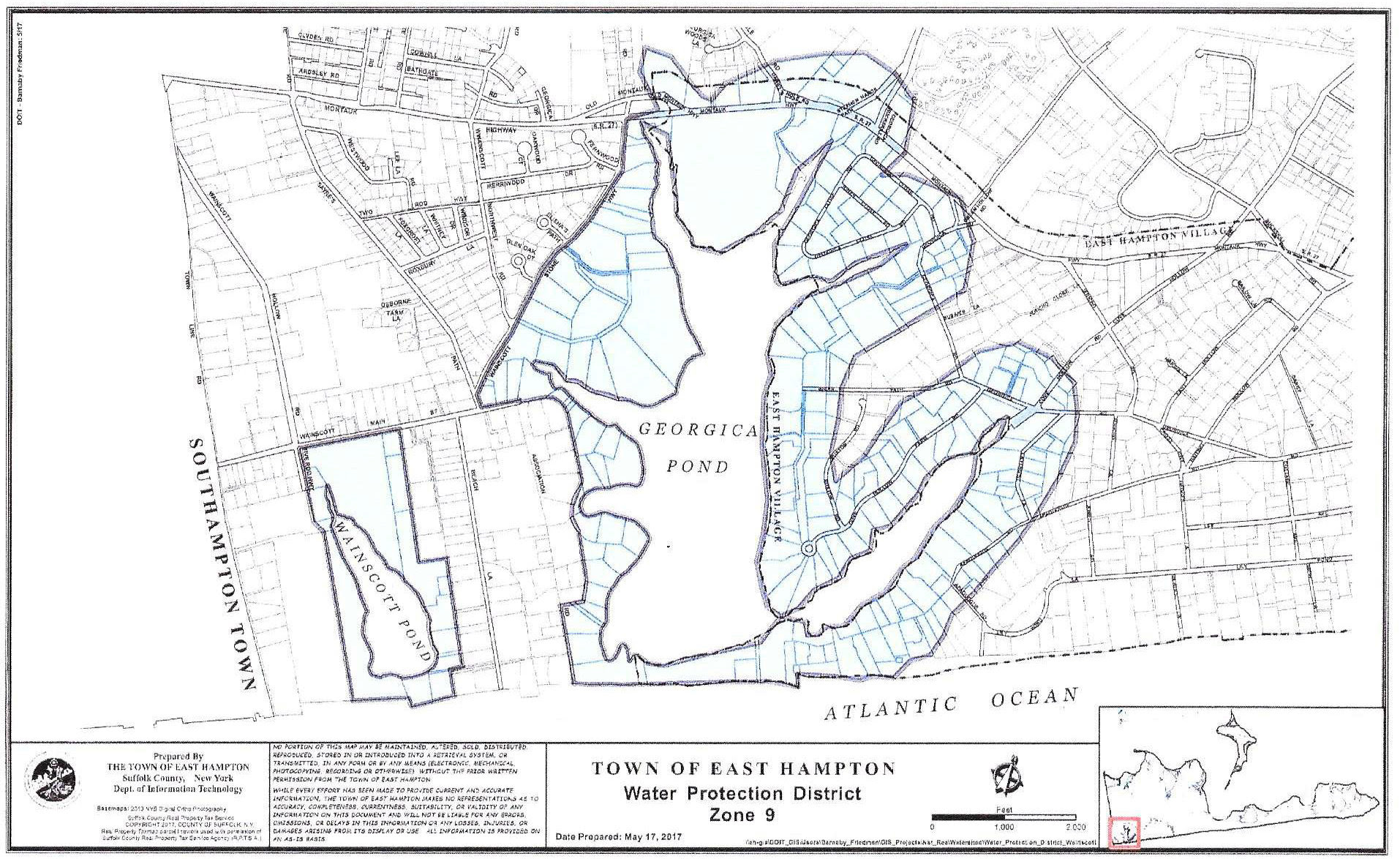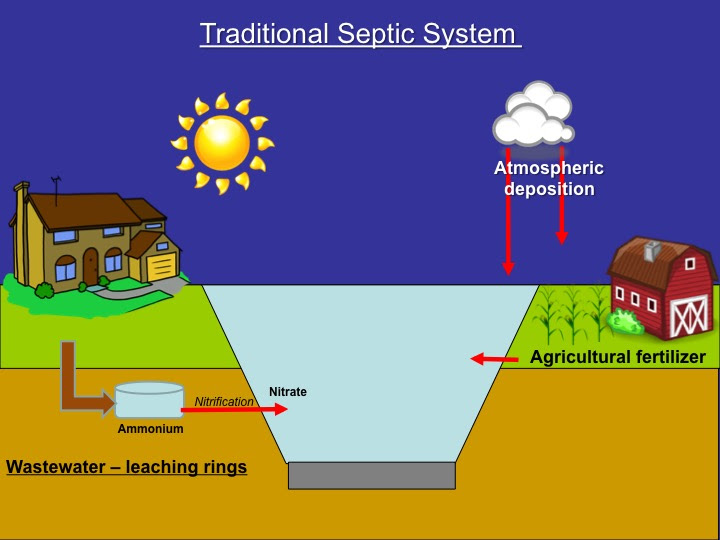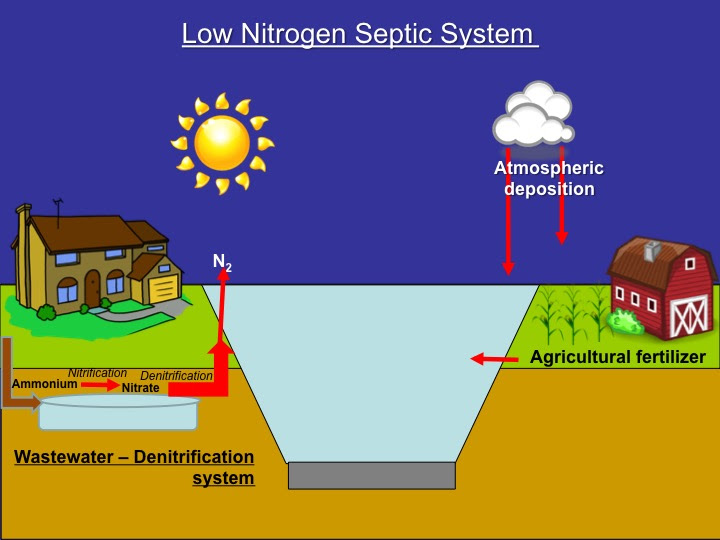After reading our previous newsletter, you may have some familiarity with the nitrogen cycle. We can now dig deeper into how nitrogen is removed from septic waste in the newly approved low nitrogen septic systems. Our partners at Suffolk County and the Town of East Hampton are advocating these systems because they work. If enough people in the water protection districts adopt them, we will start to see a meaningful reduction in the amount of nitrogen entering our water bodies including Georgica Pond.

The newly-approved systems are far superior to the traditional systems. The diagram below illustrates the difference between the traditional gravity-fed septic systems and the low-nitrogen systems. At least 60% more nitrogen is removed from wastewater with the new systems:


Be Kind to Bacteria
Bacteria are the key to both the nitrification and denitrification process, both of which happen inside the new septic tanks. Nitrification is the conversion of ammonium in urine to nitrates. Denitrification is the second step: the process of converting nitrates into nitrogen gas which is then released as a gas into the atmosphere (78% of our atmosphere is nitrogen). This important step is what removes nitrogen from the wastewater that is currently going into the groundwater and polluting our pond. The first step requires bacteria that need an environment full of oxygen to live and is referred to as aerobic. This happens in one chamber of the septic tank. The second step (denitrification) uses bacteria that require no oxygen, referred to as an anaerobic environment and happens in a second chamber in the septic tank. After spending most of our lives at war with bacteria, it is time to think about them a little differently, as least in your septic tank. The bacteria in waste need to thrive in your new septic tank, that means they need to be fed and not poisoned. Here are a few things you can do:
- Use bleach or other harsh cleaners only in moderation or none at all.There are lots of less toxic cleaners that do the job very well.Click on this link for ecofriendly cleaning products http://gimmethegoodstuff.org/
But cleaners containing essential oils such as peppermint are not recommended. - Keep junk, plastic, diapers, Clorox wipes and other non-flushable things out of the toilet.Toilet paper and human waste are the only things that should be flushed.
- Kitchen scraps are not helpful.If you have a food disposal system in your kitchen sink, have it removed.Compost your kitchen scraps instead!
- Never flush pharmaceuticals down the drain.Instead, take them to the nearest drop box (White’s Pharmacy or the East Hampton Town Police Station in Wainscott).
Natural Fertilizer & Irrigation
After the nitrogen is largely removed from the wastewater in your new septic tank, the remaining purified water must be dispersed back into the groundwater. This can be accomplished by either your existing drainage rings if they are in good shape or if the conditions in your yard are right, you can install a shallow drain field which will not only disperse the liquid, but any remaining nitrogen can be taken up by plant roots. Drain fields are basically large slabs of sand and can provide an ideal base for a lawn. At the back of this photo you can see the small green domes which are the top of the septic tank and the lawn covers the shallow drain field. Notice how nice and green the lawn is!

Energy is required
Gravity is the force which powers traditional septic systems, but energy is required to move the wastewater from the aerobic to the anaerobic chambers in the newer systems. According to Suffolk County the annual electric bill for running a low-nitrogen septic system can range from $57 to $178/year depending on what system you select. A small price to pay for the benefit of protecting our groundwater, pond and future.
